|

On eBay Now...
c1960s New Orleans Louisiana French Quarter Walking Tour Booklet For Sale
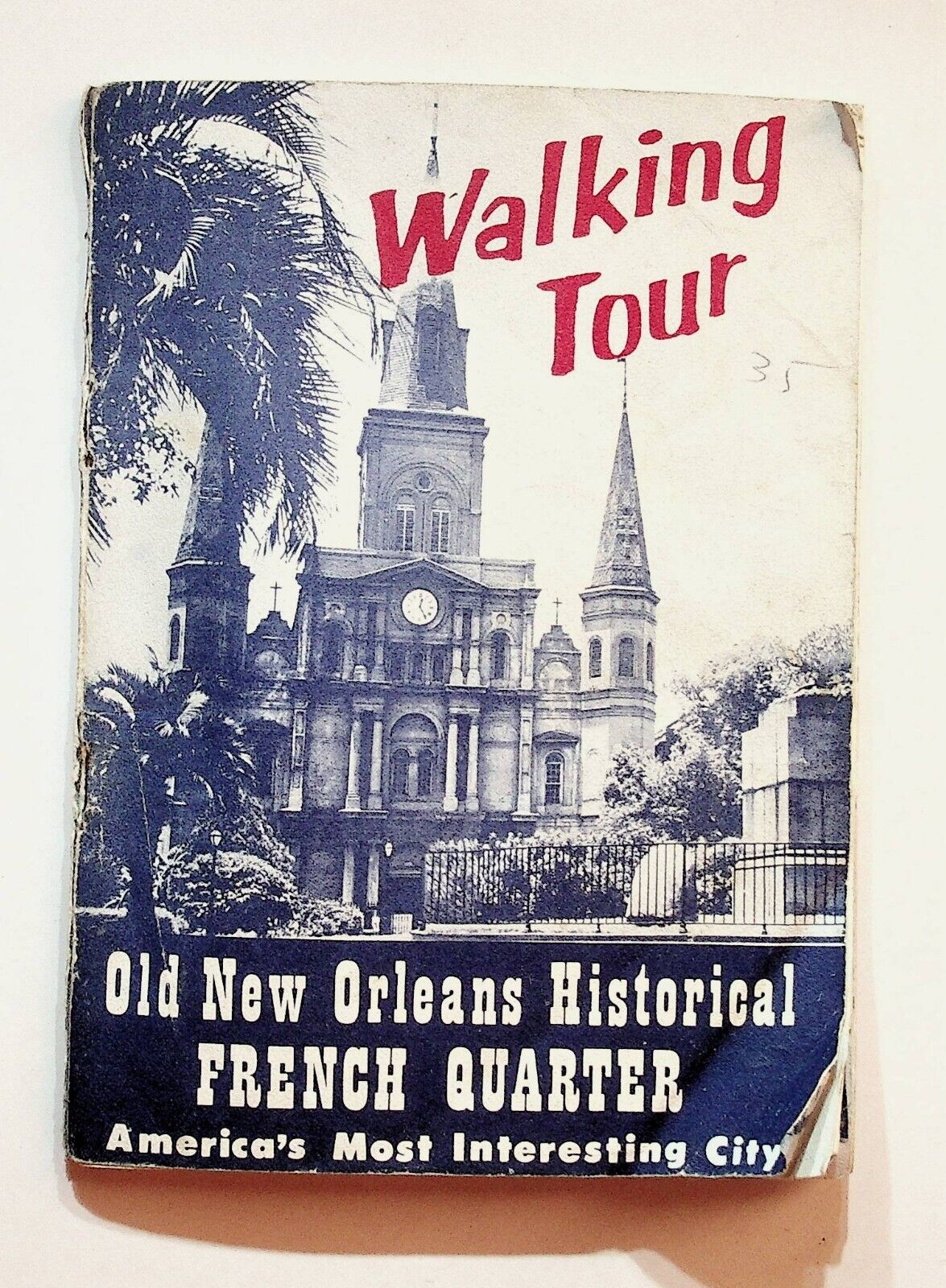
When you click on links to various merchants on this site and make a purchase, this can result in this site earning a commission. Affiliate programs and affiliations include, but are not limited to, the eBay Partner Network.

c1960s New Orleans Louisiana French Quarter Walking Tour Booklet:
$10.46
Yes we combine shipping for most multiple item purchases.Add multiple items to your cart and the combined shipping total will automatically be calculated.
c1960s New Orleans Louisiana French Quarter Walking Tour Booklet
HISTORIC NEW ORLEANSNew Orleans was founded In 1718 by Jean Baptiste le Moyne. Sieur deBienville and became a French Colony. He chose the site of the new townon a slightly higher level of ground nestling in the great sweeping curve of theMississippi River a little more than a hundred miles from its mouth.Because the French ministers were unable to visualize the possibilities ofthe site, and refused to cooperate with Bienville in developing it the firstfew years of the city were not very promising. Father Charlevoix, one of thefirst visitors to the struggling settlement, wrote in 1722 that it consisted of ahundred barracks, a large wooden storehouse, a few tents and two or threehouses which, he observed, "would be no ornament to a village of France."In the same year, however, Bienville, backed by Adrain de Pauger finallysucceeded in having the capital moved from Biloxi to New Orleans and the realhistory of the city began. Mr. de Pauger, who was assistant to Le Bland de laTour, Royal Engineer, drew up the plans of the city according to the Frenchmodel. He marked out a square around which the important public buildingsof the new community were to be located and from which the city was to de-velop. The Square, which was called the Place d'Armes and in 1849 the nameof which was changed to Jacksen Square, was located on the banks ofand the new buildings, including St. Louis Church, the predecessor ofent Cathedral, placed back of it.Thus was the beginning of New Orleans, in an area which thelong since outgrown and which is known today as the French Quarter,Carre,This French Quarter, the outstanding New Orleans attraction from the visi-tor's point of view, is very much the same now in appearance as it was to-wards the close of the French and Spanish dominations in the late eighteenthcentury and is, in fact, a veritable treasury of historic lore—romantic and pic-the riverthe pres-city hasor Vieuxturesque. The straight, narrow streets, the quaint architecture, the exquisite ironrailings, the graceful fan windows and the charming little patios or courtyardsare a never ending fascination.As in most other colonies, the settlers did not at first feel any too secureand hesitated to build along permanent lines. But with the passing of time itbecame evident that New Orleans was destined for permanence and construc-tion took on a more solid basis. Probably the oldest building in the MississippiValley is that known as Madame John's Legacy which was built in 1727 andis still in an excellent state of preservation. Vieing with it in age is the UrsulineConvent which was begun in 1724 but which, it appears from the records, wasnot completed until 1734. These two ancient buildings, both of them exceedinglyinteresting not only because of their age but architecturally as well, were builtwhen New Orleans was still a scattered community with the dividing line be-tween town and country practically indistinguishable. It was not until 1750 thatthe city's limits were definitely marked out by the construction of a wall andmoat around the city along what is now Esplanade Avenue, Rampart Street andCanal Street.It was during the latter part of the 18th century that Jackson Square, or thePlace d'Armes as it was then known, began to lake on the appearance thatit has today. The old church that had been built in 1727 and which was de-stroyed in the conflagration of 1788 was replaced by one constructed with fundssupplied by Don Almcnester y Roxes, a wealthy Spanish grandee. Tho Cathe-dral as it stands today is much altered in appearance from the low-slung struc-ture with the two minaret steeples which in 1794 was such a source of ad-miration for the French and Spanish citizenry. Yet, in spite of its alterations andPublished byPost Card Specialties, Metairie, La.1repairs during the past years, it is still the same St. Louis Cathedral in whichthe Creoles were wont io worship m the early days of the city.Equally as venerable as the Cathedral is the famous Cabildo erected <n1795 which is named after the Spanish governing body that once met with'inits massive walls. In this imposina structure took place probably the mostportant historical event in New Crleans. In its Sala Capitular on the secondfloor now the principal room of the state museum, the dignitaries of France andthe United States met in December. 1803 to sign the formal papers tha: trans.ferred the vast Louisiana territory to the American republic and determined thedirection of growth of the entire nation. All or part of seventeen states werecarved out of the Louisiana Territory.The other buildings on the Square, while not as historically interesting asthese two, contribute much to the charm and appeal of this section. The Presby-tere. also next to the Cathedral, is nearly identical in appearance with the Ca-bildo and adds much to the symmetry of the whole. It was begun prior to itsmore famous twin but because of lack of money was not completed until 1817.At present, it, too, is part of the state museum and houses the natural historydivision. Flanking the Square are two long four-story buildings with some ofthe finest cast iron work in the city gracing their block long balconies. Knownas the Pontalba Apartments they are the first buildings of this type in Americaand have in their day housed such notables as Thackeray and Jenny Lind.The main appeal of the French Quarter, of course, is in its architecture.This is not either wholly French or Spanish, but rather a combination of the twowith modifications made necessary by local climatic and topographic conditions.One of its most striking characteristics is the extensive use of ironwork, eitherwrought or cast, on the balconies, practically the only decorative feature of theseverely plain facades of the Vieux Carre homes. Fan windows, spiral staircases and large high-ceilinged rooms add to the charm of the interior of theseold houses. But most appealing of all are the cool, flagstoned courtyards whichwere used in the place of external gardens and which are planted with colorfulsemitropical shrubs and flowers. It is always cool and pleasant in these charminglittle spots which are without counterpart in a city where gardens are noted fortheir exceptional beauty. With the coming of the Americans in 1803 the FrenchQuarter began to lose some of its importance although it was to be manydecades before it would become in the main a charming memento of the city spast. As was to be expected, the Creoles, a proud clannish race, did not greetthe Americans with open arms, nor were the latter it must be said, over anxiousto fraternize with the Creoles, looking upon them as a race much too addictedto pleasure and the good things of life and not seriously enough inclined. As aresult, a feud that would have done credit to Kentucky mountaineers rearedits head in Nev/ Orleans and the Americans ostracized in the Vieux Carre,decided to move their shops and homes across Canal Street, and founded whatwas almost an entirely different city.The Garden District, is what the residential section they established is knownas toaay. A region of beautiful mansions half-hidden in a profusion of grea’hve oaks sweet-smelling magnolias and many other varieties of trees andboasting large gardens which are in some cases a block in area, this sectionS ak Pf1Ce eS{SMre iC/) a bygone day in one of ,he most notable chapters inthe history of Nev/ Orleans.lhr a"er 'he beg,in"in? °f lhe American domination the city■hreatened by an mvasron ol the British, which, if it hadn't been repulsed, wouldsov anvh,™ Tn; yn complMlon the history of this section not Iosay anything of the United States itselfconwT.hlTS? 'he W°v n 1812 ,'hai ,he Brilish dccidcd "take ° s,ab 01S attarT M v‘!y,,and selecled Nsw Oceans as the key city *attack, In 1814 a Bntish fleet appeared off Barataria Island which wasthen the headquarters of the brothers Jean and Pierre Lafitte, notorious piratesand smugglers. All attempts by the Brilish to bribe these men, including theoffer of a captaincy in the British Navy to Jean Lafitte, failed and their seivicesv/ere tendered to the defending Americans. After some hesitation on the partof officials, this offer was accepted and the pirates fought side by side withAndrew Jackson's Kentucky riflemen and Louisiana militiamen and defeated theBritish in the Battle of New Orleans, January 8, 1815.The site of this battlefield is now a park and is marked by a giant obeliskof while marble, set on the old plantation of Chalmette de Ligny, a short dis-tance below the city. Nearby are the Versailles Oaks, said to be the finestgrove of like oaks in the world, a half-mile long avenue of these majestic trees,their great spreading branches forming a verdant panoply so thick that the sunhas difficulty to penetrate it.The Battle of New Orleans decided once and for all in whose hands controlof the Mississippi Valley was to be. The great river, its tributaries and the fertilelands through which they flowed had long been a bone of contention amongmajor European powers, and even after the United States had secured full con-trol by purchase from France, England still cast longing eyes tov/ard it. Butthe decisiveness of the Battle of New Orleans put an end to British hopes.With the sense of security that followed, plus a rapid development of theentire valley, New Orleans experienced a period of prosperity which has hardlysince been equalled and which reached its apogee in the decades before theCivil War when it was one of the two or three greatest and most importantcities in America. It was during this period that the golden age of New Orleansarchitecture took place. The Vieux Carre was almost entirely neglected in thewave of new building that swept across the city and although many influentialCreoles attempted to stem the tide that threatened to move the center of businessactivity from the Quarter. They did not succeed. The Pontalba Apartmentsfor example, were constructed in 1849 and were located in the heart of theQuarter but even this large new building program did not woo back businessand financial houses into the old section of the city. That these and ether at-tempts failed is largely the reason why the French Quarter has remained un-changed for nearly a century and a half.The ante-bellum days produced some of the greatest names and mostcharacteristic buildings of the South. Such famous architects as Henry and Ben-jamin Latrobe, the two James Galliers and J. N. de Pouilly designed buildingswhich are noted to this day for their classic simplicity and good taste and areeven yet set up as models. Some of the products of these men are the oldBank of Louisiana, now the American Legion Home, the classical City Hall, nowthe Gallier Building, the Pontalba Apartments, St. Augustine's Church and otherbuildings no longer in existence such as the Old St. Charles and St. Louishotels which were among the most famous in the country. St. Louis Cathedralunderwent much change during this period and it can be truthfully said thatde Pouilly designed it as we know it. The magnificent Garden District homes,which have attracted nationwide attention as a unique and beautiful form ofarchitecture, were the work of these men and their contemporaries. Likewisemany of the plantation homes found along winding Bayou St. John made theirappearance during this period.Now look at the map which has been placed conveniently in this bookletand let's start on our journey. Starting at Charters and Canal Streets and walk-ing toward Iberville Avenue we come first to:14161113 ChartresThe Beauregard HomeThis line old home waspied by our famous southern „ ““I'P. G. T. Beauregard. ?, ,s”” £eneral'Pied by the weff-known "noveTst’Frances Parkinson Keyes. This ho™'is not open to the public but ahe7seceretaraynqed h« “1116 ChartresSt. Mary's Italian ChurchThis fine old historic church wasbuilt in 1826. replacing the UrsulineXch built there in 1780. Pleasenote the Papal Coat-of-Arms that islocated under the cross on its gable.Many claim that the heart of everyRoman Catholic Archbishop of Louisi-ana is buried behind the altar.5 1114 ChartresThe Old Ursuline ConventThe Old Ursuline Convent is oneof the oldest buildings in New Orleans-having been, erected around •became the first Catholic orPhfna9 .Louisiana, also, the first Catholc sfor Negroes and Indians. Ta mgin the opening ceremonies ot tnisvent was the founder of New OrleansSieur de Bienville and Jean Bap‘^ele Moyne, who was G°vernor o{isiana at that time. The Pres ySt. Mary's Italian Church, oc Th©door, now occupies this convpresent Ursuline convent icated in the uptown sec ioOrleans.17420 EsplanadeThe Old United States MintThe Old United States Mint was builtin 1835, costing approximately $182,-000.00. It is located on what wasknown at that time as Jackson Square(not to be confused with the presentone). Except for a brief halt duringthe War Between the States, the mintcoined money until 1910. It was onthis location that William Mumfordwas hanged in 1862 for tearing downan American flag after Admiral Farra-gut captured the city.1140 RoyalHaunted HouseHaunted House v,k5 u>832. is an «XtW°S’• It was in941 BourbonLafitte's Blacksmith ShopThis is one of the oldest buildingslocated in the French Quarter. It wasonce used by Lafitte's slaves as ablacksmith shop, and a front for spirating. At the present time It ispopular bar.
18TheerectedfhmPb °£.French'arehHecturethis building that Loui<; Pknr" "V4d inking of France. LaiXtte xlaslare said to have slept. AfteTlf^®7’Lalaune purchased this horned?"1came a "house of horror ° ^k be'her mulatto butler systematic!^gruesomely tortured her slaves Wh^a victim was discovered. Mada T alaune was nearly lynched by indin’nant Southerners. It is said that lhecries and moans of old slaves in theiragony can still be heard in th! darkhours of the night.20915 RoyalThe Cornstalk FenceThe Cornstalk Fence is the most inleresting attraction at this particularX The fence, in its array oi naturalcolors is cast iron with a cornstalkdesign. Pumpkins form the base ofthis most unusual enclosure. The build-ing on these premises is now oper-ated as a guest home.21902-910 RoyalThe Heine HouseThe Heine House, sometimes referredto as the Miltenberger Home, was builtlor the three sons of Madam Milten-berger in 1838. Her great-granddaugh-ter- Alice Heine, who was born in thisold French Colonial home, later be-came the Princess of Monaco.
stilloldRoyal Street at OrleansSt. Anthony's GardenSt. Anthony's Garden is offici°^known as The Cathedral Garden^ ThCathedral clock and the< cross Chnstmeen‘0inktLeS(oreSg0round is dedicated^demic and are buried at th717 OrleansThe Orleans BallroomThe Orleans Ballroom was erectedby John Davis in 1818, and was usedfor various attractions for the nextforty years. During this time, it wasknown, as "Salle d'Orleans." Later, itbecame the State Legislature and fin-ally the notorious quadroon ballroom.It is presently occupied bv North Amer-ica's only order of Catholic NegroNuns, "The Congregation of the Sis-ters of the Holy Family."632 DumaineMadam John's Legacy Homeing is ihe9old°est11oneystillliS t°ldr build‘<heR French Quarlerse £now a publi museumck°o"rooms of this famousing is the oldest1726. It isIs a mustfurnishingsadorn thehome.■I25Pirate's AlleyPirate's Alley, sometimes referred to as Orleans Alley is located between theL-athedral and the Cabildo, and runs from Royal Street to Chartres Street. Throuathis alley way, pirates were taken to the Cabildo jail. During the annual Srlesta, this site becomes a colorful array of artists displays. ■'
16861

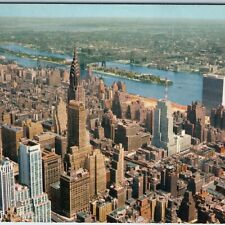
c1960s New York City, N.Y. Birds Eye from Empire State Building Chrysler UN A227 $12.50
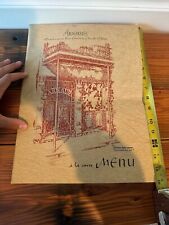
c1960s Arnaud’s Restaurant New Orleans Louisiana LA Menu Vintage Vtg $14.99
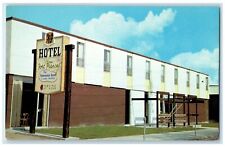
c1960's New Fort Frances Hotel Exterior Roadside Ontario California CA Postcard $14.98
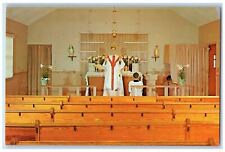
c1960's Saint Jerome Chapel New Britain, Connecticut CT Vintage Postcard $18.73
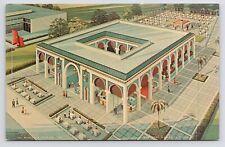
c1960s~Morocco Model of New York World's Fair 1964-1965 Vintage Postcard $4.95

c1960s~Sorrento Motel~Atlantic City New Jersey NJ~VTG Matchbook 60s Cover $5.99
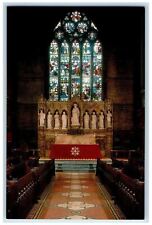
c1960's Interior, The General Theological Seminary New York City NY Postcard $18.73
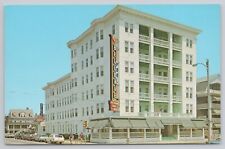
Postcard Bellevue Hotel 8th & Ocean Ave Ocean City New Jersey c1960's Unposted $11.50
|